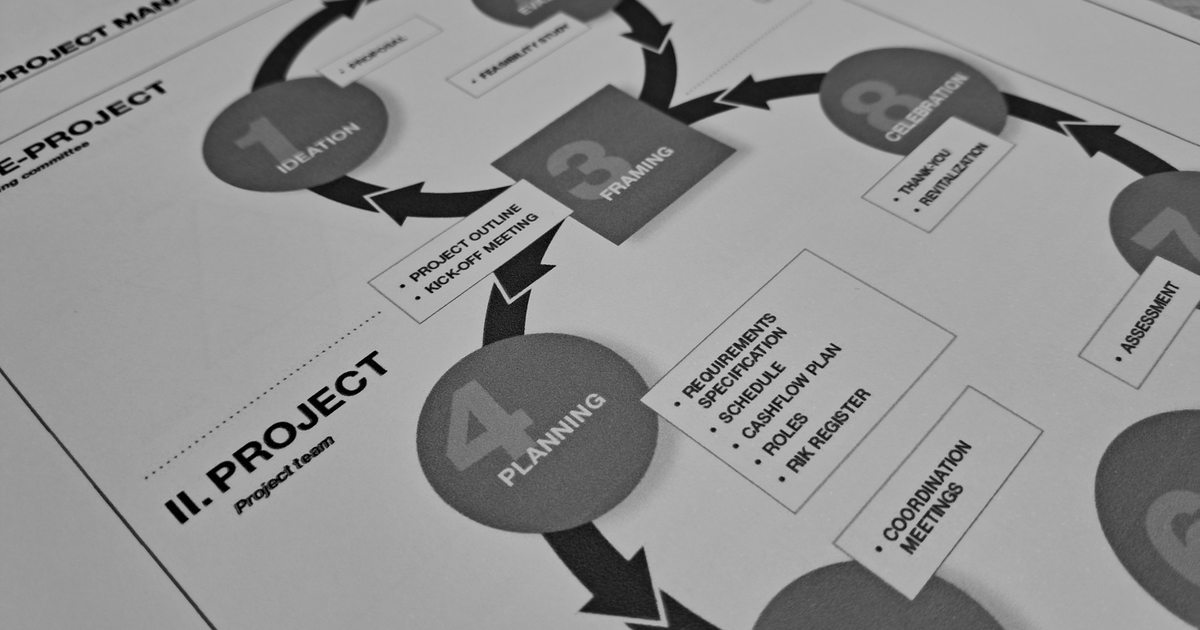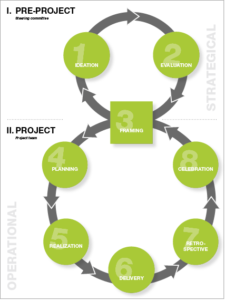Circular Project Management : The perfect alliance between predictive and agile

Two approaches, one innovative response
Project management is dominated by two main methodological schools.
Predictive (or cascade)
Born with industrialisation at the end of the XIXᵉ century, it is based on rigorous planning and strict monitoring of deadlines, costs and resources.
Its strengths
- Clear vision: well-defined scope, structured planning throughout the project.
- Management: once the planning has been done, management is easier for the project manager because everything is already structured.
Its weaknesses
- Rigidity in the face of unforeseen circumstances: difficult to adapt the plan along the way.
- Lack of flexibility: little interaction with stakeholders during the project.
- Tunnel effect: risk of ending up with a final result that is not adapted to actual needs.
This approach is ideal for projects that are easy to predict at the outset and for projects that are highly regulated (industry, construction, aeronautics, etc.).
Empirical (or agile)
Born in the 1990s with the rise of collaborative methods, Agility is based on an iterative approach and strong stakeholder involvement.
Its strengths
- Great flexibility: continuous adaptation to changing needs.
- Collaborative working and frequent feedback for continuous improvement.
- Reduced risk: errors are corrected as they occur.
Its weaknesses
- Lack of long-term vision: difficult to anticipate deadlines and budgets.
- Complexity of coordination on large-scale projects.
- Requires constant involvement of teams and customers.
- Dependence on a stable team: agile works well when the same team follows the project from start to finish.
It is well suited to projects where needs change rapidly and the team is constant, such as software development, product innovation or uncertain environments requiring a high level of responsiveness.
Circular Project Management: the best of both worlds
Circular Project Management allows you to adopt a single method, which can be deployed in predictive, agile or mixed mode as required. Our hybrid approach combines the strengths and eliminates the weaknesses of predictive and empirical approaches:
- Unique method – Predictive, agile or mixed, depending on project needs and constraints.
- Universal – Suitable for organisations with different management cultures.
- Clear vision + flexibility – Structured plan with adaptability.
- Efficient management – Rigorous monitoring of costs and deadlines while remaining responsive.
- Adapted to projects with resource rotation – Enables new players to be brought on board without disrupting project progress.
How do you set up Circular Project Management?
Stage 1: Diagnosis – Identifying the context, needs and constraints of the project.
Stage 2: Selecting the operating mode – Predictive, agile or hybrid depending on the team and the environment.
Stage 3: Deployment – Implementation of the method and associated tools.
If you’re interested, let’s talk! Contact us to find out how this approach can transform your project management.


